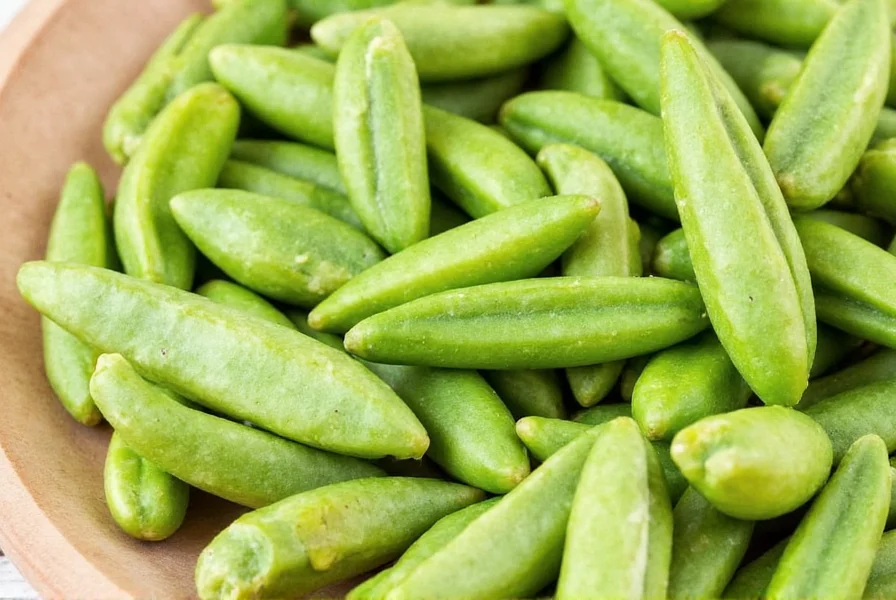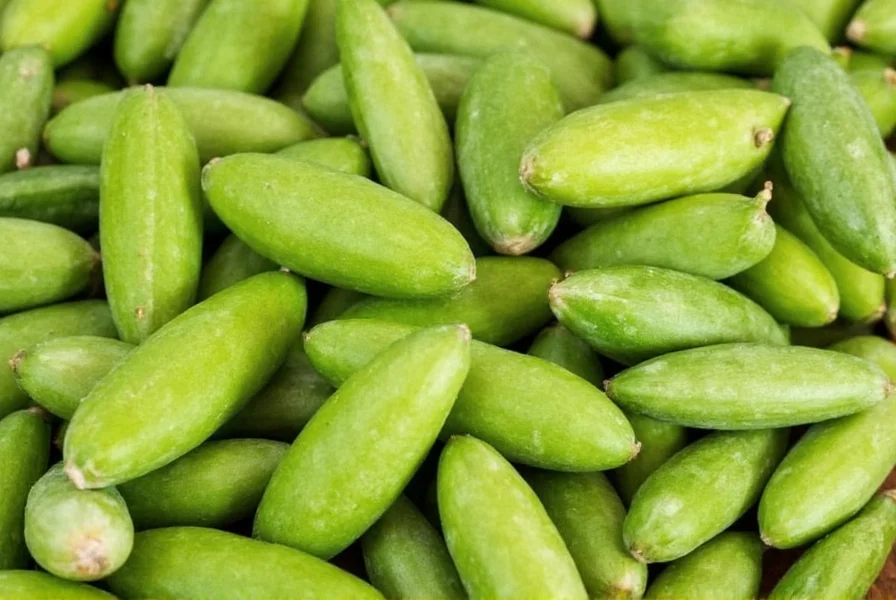Green cardamom pods represent one of the world's most prized spices, with a history stretching back thousands of years across Middle Eastern, Indian, and Scandinavian cuisines. Unlike ground cardamom, the whole pods preserve their delicate flavor compounds longer and offer unique culinary applications that ground spice cannot replicate.
What Exactly Are Green Cardamom Pods?
Green cardamom pods measure approximately 1-2 centimeters in length and feature a pale green, triangular husk that encases 8-16 tiny black seeds. The pods grow on tall perennial plants native to the humid forests of southern India, though they're now cultivated in Guatemala, Tanzania, and Sri Lanka. When selecting pods, look for those that feel heavy for their size with a vibrant green color and firm texture—these indicate freshness and optimal flavor potential.

Green Cardamom vs. Other Cardamom Varieties
Understanding the differences between cardamom varieties prevents common culinary mistakes. Green cardamom (Elettaria cardamomum) offers a bright, citrusy flavor profile, while black cardamom (Amomum subulatum) delivers a smoky, camphorous taste better suited for savory dishes. White cardamom is simply green cardamom pods bleached to remove color, resulting in diminished flavor intensity.
| Variety | Flavor Profile | Best Culinary Uses |
|---|---|---|
| Green Cardamom Pods | Citrusy, floral, slightly sweet | Desserts, rice dishes, chai, baked goods |
| Black Cardamom | Smoky, camphorous, earthy | Curries, stews, braises, savory dishes |
| Ground Cardamom | Muted, less complex | Quick baking, spice blends, when convenience matters |
How to Use Green Cardamom Pods in Cooking
Professional chefs maximize green cardamom's potential through specific preparation techniques. For whole pod usage, lightly toast the pods in a dry skillet for 30-60 seconds until fragrant, then add directly to rice dishes, braises, or chai blends. When recipes call for the seeds, gently crush the pod with the flat side of a knife to release the tiny black seeds inside. Never grind the entire pod—its fibrous husk creates unpleasant texture in finished dishes.
For optimal flavor extraction in liquids like syrups or poaching liquids, simmer whole pods for 10-15 minutes before removing. In baking applications, crush seeds using a mortar and pestle rather than a spice grinder to prevent essential oil evaporation. Scandinavian bakers often create cardamom paste by grinding seeds with a small amount of liquid for even distribution in doughs.
Proper Storage Methods for Maximum Freshness
Green cardamom pods maintain peak flavor for 6-12 months when stored correctly. Keep them in an airtight container away from light, heat, and moisture—never store near the stove or in clear glass jars. For extended storage, freeze pods in a vacuum-sealed bag for up to two years with minimal flavor degradation. Check freshness by squeezing a pod; fresh ones should spring back while stale pods remain indented.
Many home cooks make the mistake of storing cardamom in the refrigerator, where humidity causes condensation that accelerates flavor loss. Instead, choose a cool, dark pantry location. When properly stored, high-quality green cardamom pods should release a strong citrus aroma when crushed.
Substitution Guidance When Pods Are Unavailable
If you need to substitute green cardamom pods, understand that no alternative perfectly replicates their complex flavor. For every 6-8 pods required, use 1/4 teaspoon ground cardamom combined with a pinch of ground coriander to approximate the citrus notes. In Scandinavian recipes, a combination of equal parts ground cinnamon and nutmeg with a hint of ground cloves provides the closest approximation.
When substituting black cardamom for green (not recommended but sometimes necessary), use half the amount due to its stronger flavor. Remember that ground cardamom loses potency quickly—freshly ground seeds from whole pods always deliver superior results compared to pre-ground spice.
Common Mistakes to Avoid with Green Cardamom Pods
Cooking with green cardamom pods presents several pitfalls even experienced home chefs encounter. Never add whole pods directly to baked goods—they create unpleasant hard bits in finished products. Avoid grinding the entire pod including the husk, which creates fibrous texture. Don't confuse green cardamom with black cardamom in sweet applications, as their flavor profiles differ dramatically.
Many cooks underestimate cardamom's potency—using just 2-3 pods per cup of rice prevents overwhelming other flavors. When making chai, remove pods after steeping to prevent bitterness. For optimal flavor in desserts, add crushed seeds during the final mixing stage rather than early in the process to preserve volatile aromatic compounds.
How to Select Quality Green Cardamom Pods
When purchasing green cardamom pods, examine them closely for quality indicators. Fresh pods should feel heavy and make a slight rattling sound when shaken, indicating plump seeds inside. Avoid pods with brown spots, which signal age or improper drying. The husk should snap cleanly when bent—not bend limply, which indicates moisture loss.
For maximum flavor, buy from spice merchants with high turnover rather than grocery stores where spices may sit for months. Specialty Indian or Middle Eastern markets often carry fresher cardamom than standard supermarkets. Consider purchasing smaller quantities more frequently rather than bulk buying, as cardamom's volatile oils degrade over time even with proper storage.
Can you eat green cardamom pods whole?
No, you should not eat green cardamom pods whole. While the pods themselves are technically edible, their fibrous texture makes them unpleasant to chew. Chefs typically remove whole pods after they've infused flavor into dishes. Only the tiny black seeds inside should be consumed.
How long do green cardamom pods last when stored properly?
Properly stored in an airtight container away from light and moisture, green cardamom pods maintain peak flavor for 6-12 months. For extended storage, freeze them in vacuum-sealed packaging for up to two years with minimal flavor degradation. Always check freshness by squeezing a pod—fresh ones should spring back while stale pods remain indented.
What's the difference between green and black cardamom pods?
Green cardamom (Elettaria cardamomum) has a bright, citrusy, floral flavor ideal for sweet dishes and beverages. Black cardamom (Amomum subulatum) delivers a smoky, camphorous taste better suited for savory applications. Green pods are smaller and triangular, while black pods are larger, darker, and grow in clusters. Never substitute one for the other in recipes requiring specific flavor profiles.
How do you properly crush green cardamom pods to release seeds?
To release seeds from green cardamom pods, place the pod on a cutting board and gently crush it with the flat side of a knife. This cracks the husk without pulverizing the seeds. Alternatively, toast whole pods lightly in a dry skillet first, which makes the husks more brittle and easier to open. Never use a spice grinder on whole pods—the fibrous husk creates unpleasant texture in finished dishes.
Can green cardamom pods be used in coffee or tea?
Yes, green cardamom pods enhance both coffee and tea beautifully. For coffee, add one crushed pod per 4-ounce cup during brewing. In tea, simmer 2-3 whole pods in water for 5 minutes before adding tea leaves. Scandinavian cultures traditionally add cardamom to coffee, while Middle Eastern and Indian traditions incorporate it into spiced teas. Remove pods before serving to avoid unpleasant texture.











 浙公网安备
33010002000092号
浙公网安备
33010002000092号 浙B2-20120091-4
浙B2-20120091-4